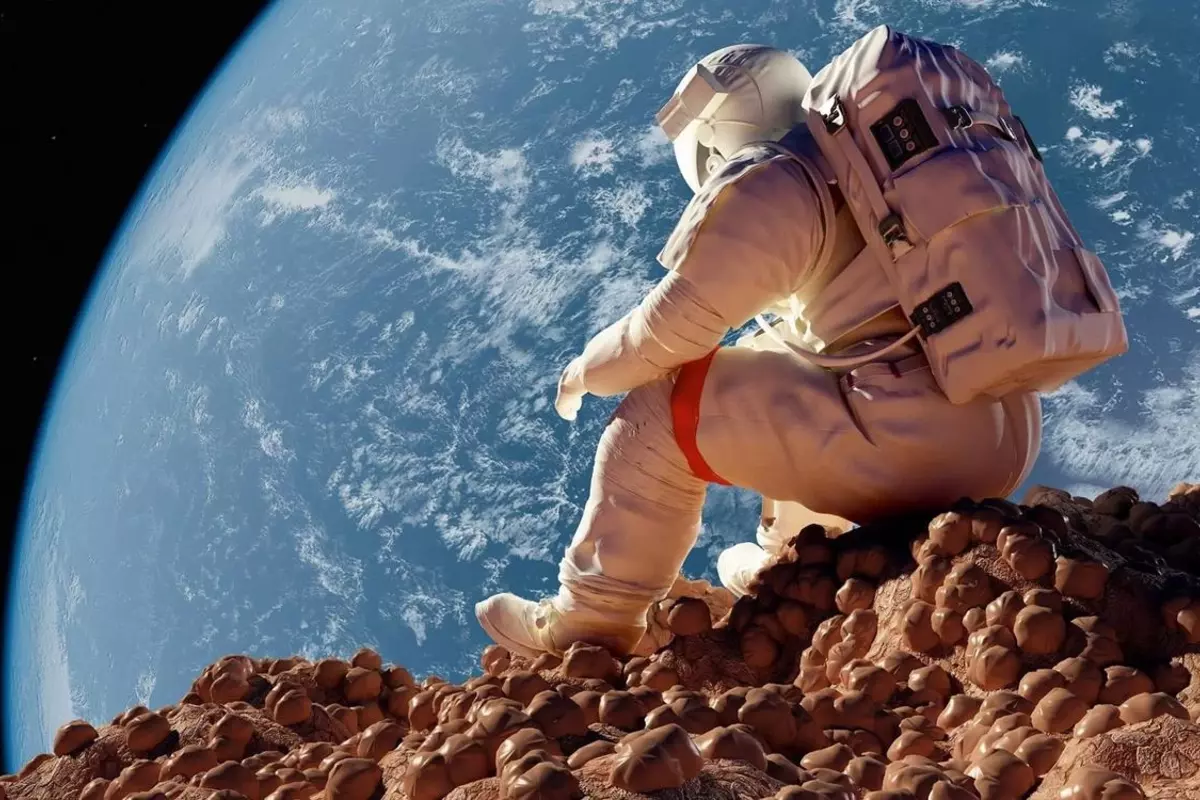
Water seen in young planet system shows Earth may have always been wet
The water vapours have probably survived despite being so close to the star because of dust shielding that shields it from the star’s ultraviolet light.
Water found on PSD 70 A young planetary system called PDS 70, located 370 light-years away, has been found to contain water thanks in part to the James Webb Space Telescope. The planetary system features a star at its core, and fewer than 100 million miles from the star, astronomers have found water vapour in the inner disk.
The star is surrounded by two distinct disks of gas and dust, each of which has the potential to give rise to both stars and planets. The distance between the inner and outer disks is 5 billion miles. Two known gas giant planets are circling the star in the gap, and a third “sibling” planet is currently forming there. According to astronomers, if PDS 70’s inner disk is anything like our solar system, then small, rocky planets similar to the Earth might originate there. The journal Nature has released a paper based on these most recent discoveries.
“Water has been observed in other disks, but not at such a near distance and in a system where planets are currently coming together. Giulia Perotti, a postdoctoral fellow at the Max Planck Institute for Astronomy in Heidelberg, Germany, is the lead author of the study. “We couldn’t make this type of measurement before Webb,” she said in a statement.
“We discover a significant number of tiny dust grains. The inner disk is a highly fascinating location, according to research coauthor Rens Waters, an astrophysics professor at Radboud University in the Netherlands. “Combined with our detection of water vapor, the inner disk is a very exciting place,” he added.
“This discovery is extremely exciting, as it probes the region where rocky planets similar to Earth typically form,” said research coauthor Thomas Henning, director of the Max Planck Institute for Astronomy and coprincipal investigator of Webb’s Mid-Infrared Instrument.
Further researches are being conducted
To gain a deeper knowledge of the PDS 70 system, additional research will be conducted using two more of Webb’s equipment, NIRCam (Near-Infrared Camera) and NIRSpec (Near-Infrared Spectrograph). The journal Nature has published these observations, which were made as part of the Guaranteed Time Observation program 1282.
The James Webb Space Telescope
Also read: ‘Prima Facie Conspiracy’ Viral Video Release Before Monsoon Session: Amit Shah
The James Webb Space Telescope is working to clear up puzzles in our solar system as well as exploring distant planets orbiting other stars and our universe’s origins and structures.
Such disks eventually become less dense in gas and dust, either as a result of the central star’s radiation and winds or as a result of the dust expanding into planet-forming-sized objects.
Silicates are the building blocks for rocky planets, even though scientists have not yet found any planets developing in the inner disk of PDS 70. Water vapor has been found, which suggests that rocky planets that are developing there will have water available to them from the start.
Silicates are the building blocks for rocky planets, even though scientists have not yet found any planets developing in the inner disk of PDS 70. Water vapor has been found, which suggests that rocky planets that are developing there will have water available to them from the start.
Theories behind the discovery
Also read: ‘Still No Law On Crypto’ Supreme Court Asks The Union Goverment
The finding raises concerns regarding the water’s provenance. One theory is that as hydrogen and oxygen atoms combine, water molecules are formed on the spot. The transfer of ice-coated dust particles from the cool outer disk to the hot inner disk, where the water ice sublimates and transforms into vapor, is another option.
“We’ve seen water in other disks, but not so close in and in a system where planets are currently assembling. We couldn’t make this type of measurement before Webb,” said lead author Giulia Perotti of the Max Planck Institute for Astronomy (MPIA) in Heidelberg, Germany.
MPIA director Thomas Henning, a co-author on the publication, added “The discovery is particularly exciting as it probes the region where rocky planets similar to Earth typically form.”
PDS 70 is thought to be 5.4 million years old, a K-type star that is colder than the Sun. It is unexpected to see water vapor at this age because stars with planet-forming disks typically live much longer.
Two known gas-giant planets reside in the PDS 70 system, which contains an inner and an outer disk of gas and dust separated by an 8 billion kilometer wide gap. Nearly 160 million kilometers from the star, where rocky, terrestrial planets are thought to develop, water vapor was found.
To read more such news, download Bharat Express news apps




















